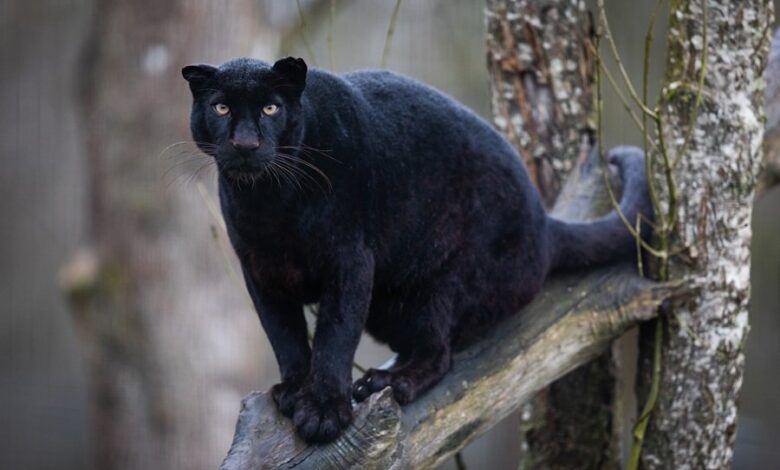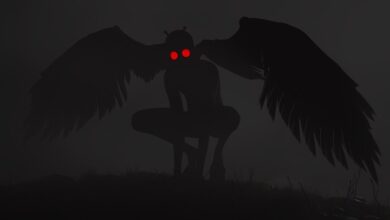Big Cat DNA Publicly Confirmed for First Time in United Kingdom

Big cat DNA found in the United Kingdom has been publicly confirmed by a lab for the first time.
The DNA was reportedly found on a sheep carcass discovered by Cumbrian resident Sharon Larkin-Snowden in an undisclosed location in October of last year.
Larkin-Snowden said the sheep carcass was fresh when she found it and that she had interrupted whatever had been feeding on it, since the animal took off running towards a stone wall before disappearing over it.
“I assumed at first it was a sheepdog, but then I did a double take and realized it was a black cat,” she said on Rick Minter’s Big Cat Conversations podcast. “It was big—the size of a German shepherd dog.”
Minter said during their conversation that he thought the animal was most likely to have been a leopard.
DNA analysis performed by Professor Robin Allaby at a laboratory at the University of Warwick confirmed Minter’s suspicion, showing that the DNA belongs to an animal in the Panthera genus, probably a leopard.
According to Allaby, DNA is difficult to lift off of swabs taken from carcasses, but this case leaves no room for doubt.
“It makes me a convert [to the existence of non-native big cats in the UK],” Allaby told BBC Wildlife. “Until now, I have remained open-minded, I think that’s my job as a scientist.”
In addition to the recent DNA analysis, Allaby has previously examined a partial claw sent to him from an anonymous witness from northern England, which he identified as belonging to a cat in the Panthera genus.
He started his testing service 12 years ago after a scavenged roe deer carcass was discovered in a small valley near Stroud in Gloucestershire.
“All we found on that one was fox [DNA], which are a really underestimated predator,” Allaby said.
Although the first to be publicly confirmed, this is the second test of suspected big cat DNA to be reported out of the UK within the past 12 months.
The first involved DNA taken from strands of black animal hair found on a barbwire fence following a sheep attack on a farm in Gloucestershire.
According to filmmaker Matthew Everett, a DNA test was ordered as part of Panthera Britannia Declassified, a documentary investigating sightings of anomalous big cats in the UK.
The hair was reportedly sent to a forensic laboratory, which requested anonymity, and analyzed using mitochondrial DNA methods to ascertain a 99.9% match to the leopard species Panthera Pardus.
Reports of anomalous big cats are relatively common in the UK, with several high profile sightings reported within the last several years, including a Wrexham woman who said she photographed the body of a mysterious big cat while driving on the A483 near Chester in England, a man who said that he found a “half-eaten deer carcass” after spotting a big cat while walking with his family to Fernworthy Reservoir at Dartmoor in Devon, a witness who recorded a video of a dark-colored animal crossing a field in the Tynedale district of Northumberland, a mysterious black animal appearing in the background of Good Morning Britain, one witness who claimed their dog had been attacked by a “large cat” while they were out walking in Birstall, a woman in Cumbria who shared a series of photos featuring an animal that many believe to be a puma, the image of a “large wildcat with big claws” shared by a man in Cambridge, and two reports of a large, anomalous black cat that came out of North West Leicestershire.
Experts question the existence of a population of true big cats in Britain, especially a breeding population. Any such animals that are recovered, like the puma found in Scotland in 1980, are largely blamed on an escaped or released pet that had been kept illegally—although hardline skeptics explain most sightings away as domestic cats that are seen near to a viewer but are misinterpreted as larger animals seen farther away and refuse to accept even the idea of exotic pet ownership to explain the phenomenon.
In contrast, certain cryptozoologists believe that Britain has secretly supported a population of leopards, or some other species of large feral feline, for thousands of years—an idea that is supported by folklore stretching back to the beginning of recorded history.




